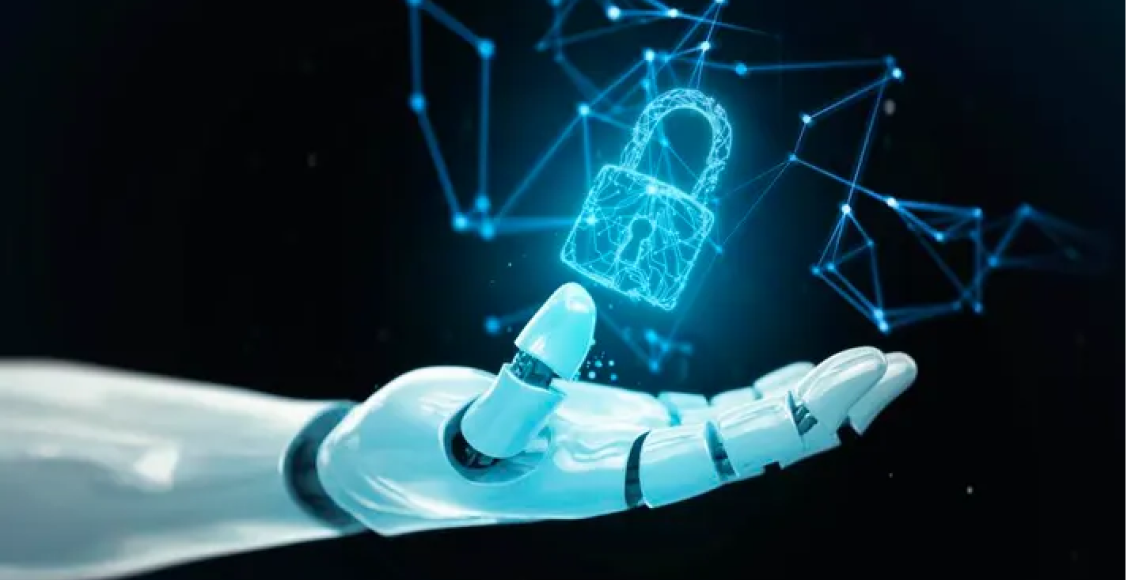Artificial intelligence (AI) is transforming cybersecurity, bringing both new threats and powerful defensive tools. In Australia, as businesses digitalize and will adopt AI technologies, cyber criminals will also weaponize AI for more sophisticated attacks. We’ve seen the rise of generative AI-based attacks from deepfake videos and voices used in scams, to AI-written phishing emails that are alarmingly convincing. At the same time, AI offers immense benefits for cybersecurity professionals: it can rapidly detect anomalies, analyze threats, and even predict attacks, augmenting human expertise in protecting organizations.
How AI Can Boost Cyber Defenses (The Benefits)
Against this backdrop of scary AI-powered attacks, there’s good news: AI is also drastically improving our ability to defend against cyber threats. When implemented correctly, AI and machine learning become force-multipliers for security teams, handling tasks and scale of data analysis that humans simply can’t match. Here are some of the major benefits of AI in cybersecurity:
- Faster Threat Detection and Response:AI excels at sifting through enormous amounts of data quickly. Modern organizations generate millions of log entries and alerts per day. AI-driven tools (like those in advanced Security Operations Centers (SOCs)) can automatically triage and analyze this flood of data in real-time. According to IBM, companies that adopted AI-enhanced security operations were able to detect and contain data breaches 74 days faster on average, saving about A$1.76 million per breach in costs (AI boosts Australian cyber defences against rising threats).
- Reducing Alert Fatigue:Security teams often struggle with “alert fatigue” – too many alerts from firewalls, antivirus, etc., most of which turn out not to be serious. AI can help by intelligently filtering and prioritizing alerts. This means the IT security staff can focus their energy on investigating real threats rather than chasing false positives. It also reduces the chance a critical alert gets overlooked in the noise.
- Automated Response:Beyond detection, AI can also automate responses. This can include isolating an infected machine from the network the instant a breach is detected or automatically resetting a user’s credentials if it detects a possible account takeover. These immediate actions can contain incidents before they escalate. Some advanced systems use AI-driven “playbooks” if certain patterns occur, the system executes a series of containment steps that previously a human would have to start. This is especially valuable in Australia where there’s a well-documented shortage of cybersecurity personnel (the country is facing a projected gap of over 16,000 security workers by 2026 (AI boosts Australian cyber defences against rising threats)
- Strengthening Existing Security Measures:AI is being embedded in many security products Australians already use. Email filters now use AI to better catch phishing (scanning writing style, detecting slight image alterations, etc.). Endpoint protection (antivirus) uses AI to identify malicious behavior rather than just known virus files.
For instance, Microsoft Defender for Endpoint uses AI and machine learning to detect and respond to threats in real time. It continuously analyzes trillions of signals across endpoints and cloud services, identifies unusual behaviors, and automatically initiates remediation actions such as isolating affected devices or reversing malicious changes. With built-in threat intelligence from Microsoft’s global security network, it helps IT teams respond faster and more effectively, especially in under-resourced environments.
Even tools like Security Copilot, Microsoft’s AI assistant for cybersecurity, assist professionals by interpreting threat signals, generating response steps, and simplifying incident investigations saving critical time in fast-moving cyberattack scenarios.
The Rise of AI-Powered Cyber Threats
Cyber attackers are notoriously quick to adopt new technology, and AI is no exception. Generative AI that can create content such as text, images, audio, or video has lowered the barrier for criminals to craft deceitful and sophisticated attacks.
Phishing attacks have also gotten an AI upgrade. Traditional phishing emails were often easy to spot due to poor grammar or generic wording. Now, with AI language models, attackers can generate personalized, grammatically perfect messages at scale. In 2023 we saw a 60% increase in AI-driven phishing attacks worldwide, with Australia among the most targeted countries (Zscaler ThreatLabz Report Finds Australia is a Phishing Hotspot – Australian Cyber Security Magazine). These AI-crafted phishing emails can mimic a writing style or include personal details scraped from social media, tricking even cautious employees.
Australia has unfortunately become something of a hotspot for these advanced attacks. Beyond the global 60% jump in AI phishing, Australia experienced a staggering 479% year-over-year surge in phishing content in 2023, some of which is driven by AI tools that automate the creation of fake websites and emails. The Australian Cyber Security Centre (ACSC) has warned that AI-generated media and deepfakes pose significant new cyber threats, including impersonation of corporate executives and automated scam campaigns (Strengthening Multimedia Integrity in the Generative AI Era).
AI as a Double-Edged Sword: The Risks
While AI enables new forms of attacks, it also introduces risks when defenders use it without care. Businesses may be tempted to deploy AI systems for cybersecurity or other purposes, but if done improperly, they could create new vulnerabilities:
- False Sense of Security:Over-reliance on AI tools might lead organizations to drop their guard. An AI system might flag fewer alerts, giving a sense that “all is well,” when it could be missing subtle threats. As some experts caution, blind trust in AI could give a false sense of security, since AI might overlook novel or nuanced attack methods that don’t match its training (Cybersecurity Experts Caution Against Over-Reliance on AI for …).
- AI System Vulnerabilities:The AI systems themselves can be attacked. Adversaries might try to “poison” an AI’s training data or find ways to trick an AI-based detection system (for example, by crafting malware that exploits the AI’s blind spots). There’s concern that if threat actors inject malicious inputs, they can manipulate AI algorithms to evade defenses (What Are the Risks and Benefits of Artificial Intelligence (AI) in Cybersecurity? – Palo Alto Networks). In short, AI isn’t foolproof, attackers will test and find ways around AI-driven defenses just as they do with traditional software.
- Privacy and Compliance Issues:AI often requires big data. If companies feed sensitive data into AI systems (say, logs or user data for analysis), they must ensure this complies with privacy laws. In Australia, the use of personal data is governed by the Privacy Act and Australian Privacy Principles (APPs), which require protecting personal information. If a business uses a cloud-based AI tool and uploads customer data, they need to know where that data goes. For instance, does it stay in Australia or go overseas? Does the AI provider keep a copy? The ACSC’s guidance on AI urges organizations to consider how an AI system handles data and ensure it meets data residency and privacy obligations (Engaging with artificial intelligence | Cyber.gov.au) (Engaging with artificial intelligence | Cyber.gov.au).
Cost and Expertise: Implementing AI for cybersecurity is not plug-and-play. It can be expensive and complex. Organizations need skilled professionals to set up and tune AI systems. Without proper setup, an AI solution might be ineffective or even counterproductive. Small businesses might waste money on an AI tool that they aren’t configured to use correctly, or they might inadvertently open new security holes if the AI tool isn’t locked down
Using AI Responsibly: Why Expert Guidance Matters
With great power comes great responsibility. The key to successfully implementing AI in cybersecurity is to do so thoughtfully and with proper expertise. AI is not a magic box you can set and forget it requires strategy, tuning, and oversight. Here’s why consulting with experts is so important when rolling out AI-driven security:
- Strategic Fit:A cybersecurity expert can assess where AI will genuinely help in your specific environment. They’ll identify the most pressing risks to your business and see which AI tools address those. For some, an AI-powered email filter might be the priority; for others, an AI network monitoring tool. Without this guidance, a company might spend time on an AI system that doesn’t target their real vulnerabilities.
- Proper Implementation and Tuning:As mentioned, AI systems often need to be trained or configured. Experts ensure that an AI is fed quality data and has the right thresholds to minimize false positives/negatives.
- Ongoing Monitoring and Adjustment:Threats evolve, and AI models might need periodic retraining or adjusting. An expert will monitor the performance of your AI defenses, are they catching what they should? Are they causing any unintended side-effects? If a new type of attack emerges that confuses the AI, the system may need an update. Security consultants or managed service providers keep current with threat trends and ensure your AI tools are updated accordingly.
- Balancing AI with Human Insight:Experienced cybersecurity professionals know that AI is a tool, not a replacement for human judgment (What Are the Risks and Benefits of Artificial Intelligence (AI) in Cybersecurity? – Palo Alto Networks). They design a workflow where AI handles the heavy lifting of data crunching, but humans make final decisions on critical matters. This balance prevents errors like an AI mistakenly shutting down a service (false alarm) or missing a cunning attack that doesn’t fit its pattern.
- Ethical and Legal Compliance:Consulting with experts, including legal or compliance advisors when deploying AI, helps navigate any ethical or regulatory issues.
In essence, while AI can significantly enhance cybersecurity, it’s not a set-and-forget solution. Especially for businesses that may not have large in-house IT teams, working with cybersecurity consultants or managed security service providers is invaluable.
One practical approach is to start with a security audit or consultation focused on AI: have experts identify where AI could help and outline a safe implementation plan.
In closing, AI in cybersecurity is a game-changer, but it works best as part of a balanced approach. Human expertise and oversight remain crucial. AI is a force multiplier for skilled professionals, not a replacement. For businesses exploring AI to boost their cyber resilience, partnering with the right experts (whether internal or external) is the safest path. By doing so, Australian organizations can confidently innovate with AI to protect themselves, staying one step ahead of cyber threats while upholding trust and ethical standards. The future of cybersecurity will undoubtedly be a collaboration between intelligent machines and wise humans and those who get that collaboration right will be the ones best protected in the years to come.




